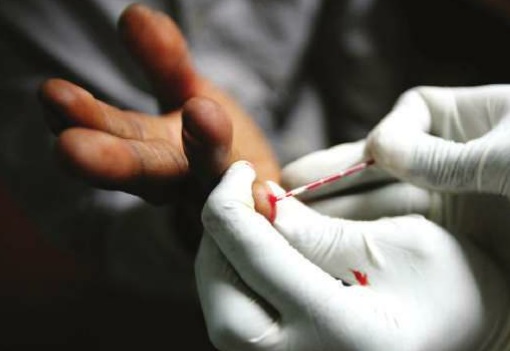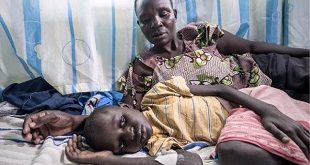Is Uganda on course?
For the second time in 16 years, the International AIDS conference was held on the African continent. From July 18 to 22, the conference brought together over 18,000 HIV/AIDS researchers, policy makers, members of the civil society and people living with the disease in the South African town of Durban to not only share knowledge about HIV but also build innovative partnerships to strengthen global response to the endemic.

This conference has always been held annually since the early1980s when the disease was first diagnosed. In Africa where about 19 million live with HIV in East and South Africa alone, the same conference was last held in 2000. The theme of the conference was ‘Breaking the Silence’ as the major concern then was creating awareness since many including political leaders were not yet aware of what AIDS actually was. One of the highlights of this conference was when then South African President Thabo Mbeki openly wondered whether AIDS really occurred in South Africa and that, if so, it was caused not by HIV but by poverty. People were urged to accept that the disease exists.
Now, the awareness and general discussion has changed. This year, the theme has been ‘Access Equity Rights Now’. What’s dominating the discussions is basically what to be done if the world is to achieve the United Nations goal of ending AIDS by 2030. In fact, in a statement to the media, Dr. Chris Beyrer, President of the International AIDS society, the main organisers of this world’s biggest health conference, said he was concerned that HIV is now perceived to be a problem that is somewhat solved. He said we still have a long way to go to get control of global AIDS with no vaccine yet.
UP to 35 million people live with the virus globally and a million people died to AIDS related causes in 2015. Also, 2 million new infections were registered last year. But, even with the big number of people living with the virus, many are able to control it with medication yet other mechanisms to control further spread have been studied and confirmed such as voluntary medical male circumcision (VMMC), prevention of mother to child programmes, correct use of condoms and consistent use of AntiRetroviral Therapy (ART) – interventions that can control infections and other problems that come with HIV. Other innovations like the recently studied medicinal vaginal ring that prevents infection, stem cell transplants and gene therapy where HIV is sniped out of infected cells are some of the other options scientists are exploring.
However, while there is advancement in tackling HIV in many countries, Uganda which is among the top five countries in Africa in terms of infections is still registering mixed progress apart from in pregnant women where coverage of ART has been successful at 95%.
According to the 2014 Uganda HIV/AIDS country progress report which is the latest, the number of people living with HIV was increasing which is partly attributed to continuing spread of the infection. Between 2011 and 2014 only, the number of people living with the disease increased from 1.3 to 1.5 million. Also in 2014, 32890 AIDS related deaths were recorded.
What is worrisome is almost half of the people living with the virus are not receiving ART with only 51% on treatment. Joshua Wamboga, the Executive Director Uganda Network of AIDS Service Organisation (UNASO) a civil society organisation focusing on HIV says among the youths where infections are increasing, many are not enrolled on drugs and yet there is no sign of catering for this group as funding for HIV has also not increased. He says the sector in FY 2016/17 has grossly under prioritised financing for HIV/AIDS alleviation currently at Shs100 billion for the last three years.
“Going by the new WHO guidelines of test and treat the current enrollment of 80% will reduce to 48% against a constant budget for ARVs,” he said.
Even in male circumcision where confirmatory studies of its 60% protection from HIV were done in Uganda, men are still reluctant to take it up. Dr. Nanteza told The Independent that about 2 million men have been circumcised since 2010 yet they had set a target of circumcising 4.2 million men by 2015 to hopefully halve the country’s incidence.
Speaking to journalists on July 15, Health Minister Jane Ruth Aceng said prevalence had stabilised at 7.4% in 2014 from 7.3% in 2011 and 6.5% in 2004. She said in addition to other government programmes aimed at containing the scourge, the government is set to conduct an assessment that will measure the reach and impact of the country’s HIV prevention, care and treatment services. She said this information will help them chart a course to reach the UNAIDS’ 90-90-90 targets and ultimately bring the HIV epidemic under control.
However, since there hasn’t been any reliable survey into the disease since 2011, solid evidence as to whether the interventions are yielding results or not will only be got after August when a new population based HIV survey is hoped to kick off. For now, Wamboga who says tackling HIV in Uganda needs leadership and political will says for example if government would deliver on its commitment for 2016/17 to Shs100 billion shillings for HIV treatment, and PEPFAR provides an additional $8.3 million in funding, alongside improved prices from National Medical Stores and reduced Procurement and Supply Chain Management costs more be will be enrolled on treatment. Other innovations in HIV prevention can be tried out with time.
****
editor@independent.co.ug
 The Independent Uganda: You get the Truth we Pay the Price
The Independent Uganda: You get the Truth we Pay the Price


